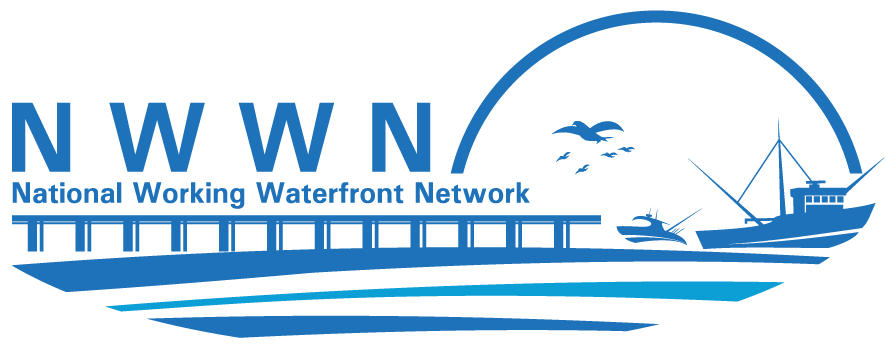
12 Sep Studying Population Dynamics of Atlantic Sturgeon in the Hudson and Delaware River Systems to Assist with Reducing Bycatch in the Monkfish Gillnet Industry – NWWN 2023 Internship Highlights
Written by Daniel Millea, University of Delaware
The Atlantic Sturgeon project has been underway since our previous blog post in the Spring. There was a large delay on the production of the new gillnets involving supply chain issues regarding the mesh material. At this point in the summer, the gillnets have been completed and are in shipment to our commercial fishing industry partner, Kevin Wark, from Endeavor Fisheries. Kevin is working to coordinate our commercial fishing cooperators in the monkfish fishery who will fish with these new nets in the Atlantic Sturgeon bycatch reduction project.
Furthermore, regarding other aspects of the project, there has been a large amount of field effort since the spring. In May, Dr. Dewayne Fox from Delaware State University and I have conducted acoustic receiver downloads within the Delaware River to monitor Atlantic sturgeon movements during the beginning of the spawning run. Furthermore, in the months of May and June, Dr. Fox, and I along with our colleague, Dr. John Madsen, conducted side-scan sonar transects along the Delaware River (May) and the Hudson River (June). This effort is focused on using side-scan sonar technology to image adult Atlantic sturgeon along the spawning grounds of both rivers. These sonar readings can then be implemented into a software known as SonarWiz to identify possible targets (adult Atlantic sturgeon) as well as conducting length frequency (proportion of body lengths) on these targets. During the month of July, Dr. Fox, Dr. Edward Hale, Kevin Wark, and I set out on Kevin’s commercial fishing vessel, the Dana Christine II, to tag Atlantic sturgeon with acoustic tags.
Pairing the side-scan sonar data with acoustic telemetry can provide us valuable information on Atlantic sturgeon population dynamics and movements during the spawning runs for the New York Bight Distinct Population Segment (NYB DPS) [more information on Atlantic sturgeon Distinct Population Segments can be found in the United States Federal endangered species listing of Atlantic sturgeon]. This data is valuable when identifying offshore populations of Atlantic sturgeon regarding the gillnet bycatch project to understand how many individuals are spawning in each river system after both populations mix offshore. Using this data will provide insight on the population dynamics of both populations. Furthermore, using this data can facilitate in restoration efforts depending on which river population is more effected.
Regarding the modified gillnets, fishing for the year of 2023 will commence later this fall into the Winter of 2024. Due to the delays in manufacturing, most of the 2023 fishing season was missed and the project was pushed back. As previously mentioned, Kevin Wark will be locating potential cooperators to fish the modified nets along with the standard industry net. There will be a total of 8 participating commercial fishing cooperators ranging from New England to the Mid-Atlantic. Each cooperator will conduct 10 trips with the modified nets providing 80 trips in total (however, we are optimistic that they will find the nets worthwhile and warrant additional trips). Each trip will consist of 2 standard industry nets and 2 modified nets being fished. Captains of each vessel will collect data on how many Atlantic sturgeon were captured along with target catch. I have created a questionnaire for each trip consisting on the number of Atlantic sturgeon captured along with target catch numbers. Along with this, I have also created questions regarding the gear and how each cooperator feels about the modified net. Later, the data will be analyzed to determine: 1) if the modified gillnets reduced Atlantic sturgeon bycatch; 2) if there was an increase or reduction in target catch rates; and 3) analyzing harvester feedback on the modified net performance to gauge potential adoption of the modified net over the standard industry net.
For additional information about the project along with where the project currently stands, please contact myself (Daniel Millea) at dmillea@udel.edu.

